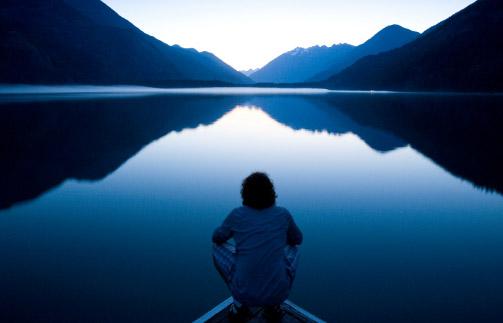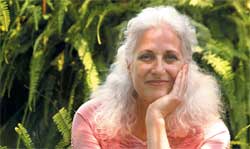
During the summer here at Plum Village we host a series of family retreats. For the first time this year I participated in the Teen Program with other monastics and lay volunteers, sharing a little bit of mindfulness practice and playing a lot of games with groups of 12–34 teenagers a week, aged up to 18. I worked at a number of summer camps with teenagers before taking ordination, so I was looking forward to this opportunity. The teen years can be a challenging time for both the teens themselves and the adults in their lives, yet I feel particularly inspired by this age group precisely because of the challenges, and the joys, of this age. The people I met as a teenager that offered a positive direction in my life had a huge impact on me, so getting to share mindfulness with teenagers now felt like the least I could do to “pass it on.”
There were a number of things to consider when approaching the teens. Most of them came with their parents, and therefore did not come entirely of their own volition. We had to start by making a fun, relaxing, and caring environment to open up those who arrived completely closed to the practice. Last week, one boy said, “I thought it was going to be really strict and boring and that I would have to hang out with my sister for the whole week. But I made lots of friends and it was really fun!” No matter how well planned our activities, what matters most to teens are their friends. So we always started by focusing on creating a friendly and inclusive community—playing lots of games, sports, and an evening with hot chocolate. It reminded me so clearly that the connections we make as humans not only bring joy to our lives, but also a sense of safety. Our reptilian brains will value group safety before anything else, so building community is not just fun—it’s vital. It’s what we’ve evolved to do and it’s the best way to share anything with people.
We approached the formal practices as informally as possible. There was a special sitting meditation in the morning for the teens where they started later than their parents and could arrive late, finishing with some gentle qigong. We introduced walking meditation and eating meditation with games, took time to help the teens write “love letters” to their parents (not always easy!!!), and did a lot of singing in a deeply mindful way. In all the fun and games, I received a valuable reminder that mindfulness practice can be a game for everyone, not just teens. Joy must be at the heart of the practice for it to take root and flourish.
We practiced a lot of five-minute and spontaneous meditations throughout the day. Yes, most teens have shorter attention spans than adults, but they can often quiet their minds more easily. One girl said, “I start by following my breathing until I can hear my heartbeat. Then I just listen to that.” No worries about the right technique, no complaints of wandering mind, just a deep enjoyment and calm. That still isn’t my experience, but I am happy to know it is for her! Inspired by this girl I’ve tried “heartbeat meditation,” and it’s a very nice practice.
So many of the young people came with big problems—divorced families, parents always away at work, pressure to drink and do drugs, being addicted to drugs themselves, being forced to have sex before they’re ready, addicted to sex already, massive anxiety, depression, self-harming, classmates who have committed suicide, parents dying of cancer, shootings in their schools, and more. We had a lot of fun but at the same time, we could never forget that underneath all the talking and playing was a lot of suffering. We needed to share practices that would help them day to day, like coming back to the breath, relaxing the body, and seeing that emotions are always changing. We had to come back again and again to the essence of the practice. No theory, no rote answers, no empty rituals. If we tried to offer something dry, it got chewed up and spit out right away. Signs of this included fidgeting bodies, the rolling of eyes, or simply leaving the activity. But when we were honest and let ourselves be vulnerable by sharing our difficulties and how we actually practice, the teens were interested and inspired. I kept asking myself, “What is this really about?” The answers that came up were: acceptance, understanding, compassion, peace.
Being with their wounds also brought up wounds from my own teenage years, which I thought had healed long ago. But they popped up, as alive as when I was 16—feeling excluded by the “popular people,” not knowing how to approach a new person, and generally feeling uncomfortable in my own skin. We often hear about the wounded child within, but let me tell you, there is also a wounded teenager within! Fortunately, I am no longer a teenager and I have a practice, so it didn’t take very long to release and transform the painful feelings, negative thoughts, and physical tension. Then I could just enjoy letting my inner teenager come out and play. She had a great time.
There was one teen that I was able to connect with very quickly, who reminded me of my teenage self and my teenage best friend all rolled into one. One day, this teen had had an argument with her mom and came to ask for help. As she stood there crying, I reached over and gave her a big hug. I felt like a combination of a big sister, a guidance counselor, and a fairy godmother. I didn’t do very much, just listening and breathing once the hug was over, but something shifted in both of us. She was relieved, and could make some sense of the conflict. I also felt relieved, and more spacious inside. By offering support to someone now, the teenager within me who had wanted this kind of support and understanding 20 years ago also received it. Time dissolved for a moment and I was both the adult and the child, taking care of myself as I cared for another. I’ve heard of this in theory, but it was the deepest experience I’ve ever had of this kind. When I volunteered to be part of the Teen Program, I hadn’t expected this. I am so grateful! I’ll definitely volunteer again.











